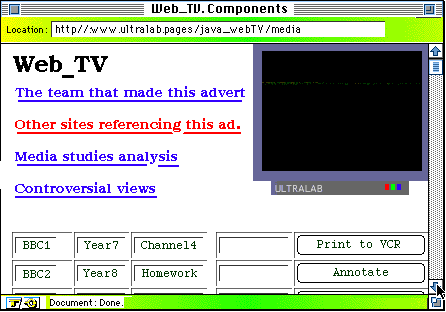|
|
Process and annotation......primary content is just a beginning |
|
|
We build layer upon layer of annotations: In learning many people - children, teachers, librarians, parents, journalists, friends have an annotative role. Think of the layers of interpretation on a sporting occasion: commentators, experts, local coaches ("look, he's of his line again..."), local radio ("its been another bad day for The Blues playing away"), fanzines, wildly partisan phone-in contributors, journalist, friends, and so on. In many cases (but not all!) these annotations add value to the original broadcast. |
|
|
In addition we have an increasing fascination about process. 15 years ago you enjoyed Star Wars l-o-n-g before you saw "the making of Star Wars" on TV. Today you see "The making of..." before going to see the film. Understanding process is a great part of developing critical awareness and critical thinking... and of learning. To carry and support process rich content requires high bandwidth. To allow learners to enter into any sort of dialogue with the annotators requires symmetrical, ubiquitous, broad, bandwidth. |
|
|
Summary 3: Adding layers of interpretation and process to media rich content is essential if we are to develop a participative democracy of information and learning. This can't and shouldn't all be done at source. The mediaeval church tried to stop us making a contribution too! |

©Ultralab 1994. An example of annotation - in this case the video becomes secondary to the layers of interpretation and contribution, including work by the learners and their teachers.
In this screendump the video does not run - sorry!

